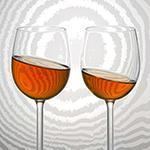-
Posts
1,439 -
Joined
-
Last visited
-
Days Won
15
Everything posted by jt49
-
Create a project with just one slide which shows your problem. Create a Backup in Zip, and post it here.
-
Open your project / save it using a new name (this helps to keep your original project) / open the new project / make a right click into the Slide List / choose random order / create an Executable file for PC
-

Live presentation mode with preview of next slide?
jt49 replied to pixelfuxx's topic in Suggestions for Next Versions
Typical candidates for producing AV-Shows and offering speaker support are Wings X, and m.objects. Speaker support includes preview of images and notes for the speaker, and asynchronous audio that can be played during sections with manual control. -

Live presentation mode with preview of next slide?
jt49 replied to pixelfuxx's topic in Suggestions for Next Versions
It really is a pity that PTE is missing some crucial functions for live presentations. For preview and notes (as requested by Bruno), I use a workaround: Preview images and notes are on PDF documents, and I open these documents (using a portable version of SumatraPDF) via the Run command in the slide options using scripts for NirCmd. I hope that time will come with new versions of PTE, and with enhanced support for live presentations. -
It isn't that easy. For curling or rolling images you have to cut the images into stripes and work with parent-child-constructions. You may have a look at some older styles here. They do not cover your problem, but they show at least what kind of work is to be done. 😊
-
Timeline scaling in O&A has been asked for quite a long time. Maybe we will see it in Version 12 that hopefully will be released some day (?).
-
From the forum rules: "All messages must be in English only."
-
That's true, and sorry for this misleading comment. I was thinking about the output of a PTE show, either from the timeline or running an executible show. Here I would like to have a choice for the audio output device (as we have it in VLC, MPC-HC, foobar2000)
-
In Windows we have the choice for the microphone (when recording). But what we do not have is the choice for the audio output device 🥲
-
I went back to PTE 11.0.14, an the problems disappeared (I don't have 11.0.15 at hand).
-
You may have a look at the attached project: I see problems with "Gauss Extended" in O&A and Mini Player, and with "Gauss" in O&A, Mini Player and in the Preview. Blur-Problem.zip
-
This is a good suggestion. Nevertheless, my suggestion is just another matter. Only recently I had a track with lots of clips, each one with an individual setting, and I wanted to reduce the overall volume of this track. I used the following workaround: I exported the said track as a wave file, and I inserted this file as a new track while muting the original track. Now I could change the volume using the envelope. It works, but it isn't a pleasant way to go. So. I would like to see a volume slider for the whole track, as we have it in Audacity.
-
In "Project Options > Audio" we have a volume slider for each clip. It would be fine if we also had one for each track.
-
Instead of working with the installation data of your styles, I would prefer just to export the styles in PTE's Styles and Themes window. You will obtain files of type "ptestyle", which seem to be zip-files containing all data for the installation of the corresponding styles.
-
Jienense's example shows the way to go!
-
This backup method is better than having nothing, but I do not regard it as a method providing a high level of safety, as it only preserves the last two versions of a project. If you click the Save button two times today you cannot go back to a version you worked on yesterday. I would like to suggest an alternative backup method that preserves all backup project files, maybe something like: MyProject.pte.bak_0001, MyProject.pte.bak_0002, MyProject.pte.bak_0003 ...
-
It isn't blank (as far as I see), but a project with 144 slides. Maybe that PTE will not find the images in folder "1-PTE AV Shows\00-Working Project\2024 Med\Photos" on drive "E". Copy the recovered project file into this folder and open it there, and tell me what has happened.
-
Is "{1461006E-9E00-44BF-B450-EC166562AE6E}.pte" the recovered project?
-
Congratulations and best wishes from Munich. I have been using PTE for 17 years now, and I'm looking forward to version 12. Jürgen
-
I would like to agree that "Transparent to selection" should not have an effect in the editor. In the editor we can make use of "Ignore objects not selected", and IMO we do not need much more than that.
-
Some people ask for rotation in Framing. You can do this using masks. In the attached project you will see a construction that has to be repeated in a similar way for all aspect ratios you need (of course only once for each AR). In my example it is 3:2. Take care of the border: Zoom X and Y of the corresponding rectangle independently, and use Pixels instead of Percentage. As you see, you can even zoom the border, or zoom the image while keeping the border at (almost) constant width. Framing_with_masks.zip
-
- 4
-


